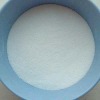- Other Inorganic Salts[10]
- Chlorate[3]
- Food Additives[7]
- Pharmaceutical[1]
- Other Chemicals[2]
- Chemical Auxiliary Agent[10]
- Organic Intermediate[8]
- Feed Additives[2]
- Chloride[6]
- Sulphate[4]
- Elementary Substances[1]
- Nitrate[2]
- Other Inorganic Chemicals[1]
- Carbonate[3]
- Ceramics[1]
- Contact Person : Mr. Kreman Henry
- Company Name : Gemhold (SJZ) Trading Co., Ltd.
- Tel : 86-311-87795868
- Fax : 86-311-87796437
- Address : Hebei,SHIJIAZHUANG,NO 233 HONGQI STREET
- Country/Region : China
- Zip : 050061
Sucralose sweetener
Sucralose is one of the most excellent sweeteners with the highest sweetness so far. It is firstly researched and reported by the British cooperation. After a series of strict experiments for about 10 years on pharmacology, toxicology, physiological physics and chemistry, it has been proved to be absolutely secure for human being. In 1990, with the name of Sucra-lose, this artificial sugar had got the approval from UN Food and Agriculture Organization and the World Health Organization (FAO/WHO) and it could be sold worldwide from then on.
Product Name | Sucralose |
Chemical Name | 1’,6’–Dichloro-1’,6’-dideoxy-β-D-fructofuranosyl–4–chloro–4–deoxy-α-D-galactopyranoside |
Synonyms | TGS; 4, 1’, 6 ‘– Trichlorogalactosucrose; Trichlorogalactosucrose |
Molecular Formula | C12H19O8Cl3 |
molecular weight | 397.64 |
appearance | white powder |
CNS | 19.016 |
INS | 955 |
CAS | [56038-13-2] |
Sausage The natural sugar-like sweetness of Sucralose can be used to make rich, tasty sausages, drawing out the meatiness and accentuating herbal and spicy flavors. As Sucralose is a high intensity sweetener, very small levels of addition are necessary to benefit from its advantages. Additionally, both resistant to heat in acidic to neutral conditions and stable throughout prolonged storage, Sucralose will not be broken down or deteriorate in quality from heat sterilization during the production process.
Sucralose sweetener







